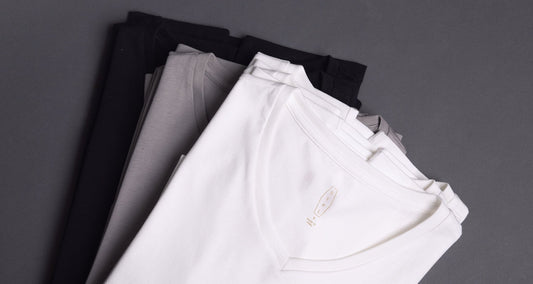History Of The Sweater
Share
Sweaters have come a long way since their humble beginnings as practical garments worn by fisherman in the early 19th century.

Over time, they have evolved into fashionable clothing items, essential in every wardrobe. In this article, we'll take a closer look at the history of sweaters and how they have evolved into what we know today.
The origins of sweaters can be traced back to the early 19th century when fishermen in Ireland and Scotland wore them as a practical solution to keep warm on the high seas. These early sweaters were made from thick, heavy wool and often featured intricate patterns and cable knit designs. The wool was also treated with oil to help make it water-resistant, a critical requirement for fisherman braving the elements.

By the turn of the 20th century, sweaters had become popular clothing items for both men and women. They were still largely practical in nature, with designs being created for specific activities such as golf or tennis. However, the rise of casual clothing and the popularity of Hollywood films helped to make sweaters more fashionable. This was especially true in the 1930s when movie stars such as Fred Astaire and Ginger Rogers popularised the classic V-neck sweater.

During World War II, sweaters continued to play a practical role as they were used as a part of military uniforms.

This helped to further popularize the garment and it was not long before they began to be worn in more casual settings. In the 1950s and 60s, sweaters became an integral part of the Ivy League look, with many young men wearing cardigans and V-neck sweaters as part of their wardrobes.

The history of sweaters is a story of evolution. From their early beginnings as practical garments for fisherman, they have become essential clothing items, loved for their versatility, comfort, and style. Whether you're wearing a cozy sweater on a cold winter's day or a chic sweater to a formal event, the STPL sweater will become an integral part of your wardrobe for years to come.






1 comment
Anatomy-inspired fashion truly merges the worlds of art and science, offering a unique way to express individuality. The way these designs, especially on sweaters, combine detailed anatomical imagery with wearable art is fascinating. It’s a trend that not only makes a bold statement but also sparks conversations about the human body in a creative context.
In fact, I’ve recently explored this trend in-depth, highlighting how anatomy sweaters are becoming a staple in 2024 fashion. From intricate heart designs to full-body skeletal prints, these pieces are redefining what it means to wear your heart (and other organs!) on your sleeve. If you’re interested, you might find some unique insights in my article https://trendingcoolnews.com/anatomy-sweaters-that-will-make-you-stand-out/ it dives into how this trend is shaping the future of fashion and why it’s worth keeping an eye on.